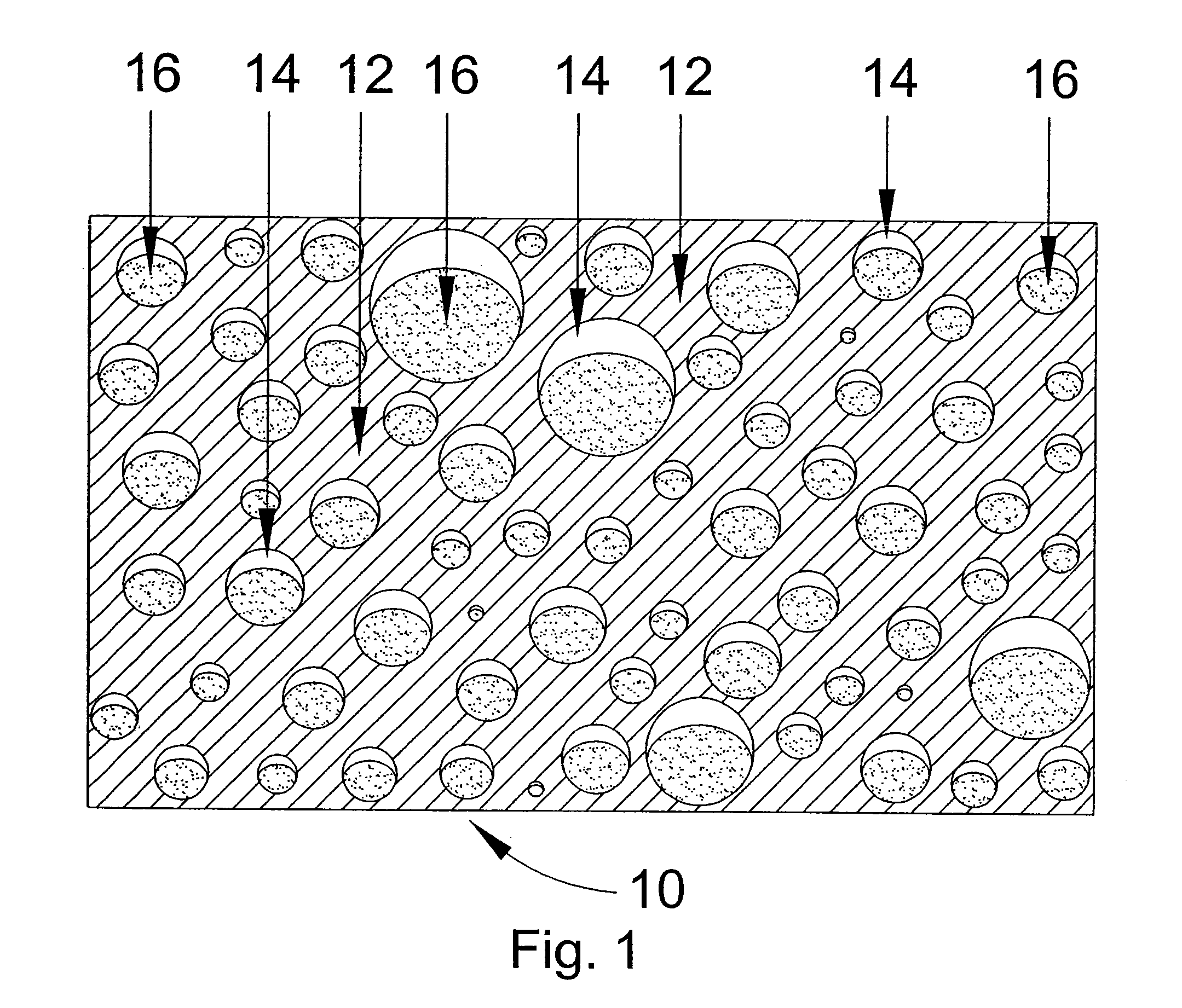Topical ointment and method for making and using same
a technology of topical ointment and ointment, which is applied in the direction of powder delivery, pharmaceutical delivery mechanism, peptide/protein ingredients, etc., can solve the problems of pain experienced from injections, lack of absorption of drugs through stomach lining, and inability to deliver measured amounts of drugs over predetermined periods of tim
- Summary
- Abstract
- Description
- Claims
- Application Information
AI Technical Summary
Benefits of technology
Problems solved by technology
Method used
Image
Examples
example 1
[0045] Ingredients Used:
[0046] 908 gms of plasticized hydrocarbon gel base [95% mineral oil (50% light and 50% heavy) and 5% heavy hydrocarbon waxes (polyethylene glycol) having a molecular weight of 1295-1315] (Plastibase® from Bristol-Meyers Squibb). 820 mL of 0.9% Sodium Chloride solution
[0047] 6.3 mL of Benzyl Alcohol
[0048] 55 gms of Methylcellulose 4000 cps
[0049] All 908 grams of solid bulk plasticized hydrocarbon gel may be placed in a mixing bowl of a mixing apparatus, such as a table top mixer. The mixer may be started at a low shear rate and the plasticized hydrocarbon gel may be mixed for 2-8 minutes. Then, the 820 mL of sodium chloride solution may be added in increments of 200-250 mL over a period of 2-5 minutes until all of the solution has been added and mixed with the plasticized hydrocarbon gel. Next, the benzyl alcohol may be added in 1-1.5 mL increments until all 6.3 mL have been added. The combination of sodium chloride solution and benzyl alcohol forms a bact...
example 2
[0051] Ingredients Used:
[0052] 862.6 gms of a mixture of mineral oils (50% light and 50% heavy)
[0053] 45.4 gms of polyethylene glycol (PEG) having a molecular weight of 1295-1315
[0054] 820 mL of 0.9% Sodium Chloride solution
[0055] 6.3 mL of Benzyl Alcohol
[0056] 55 gms of Methylcellulose 4000 cps
[0057] The PEG may be placed in a mixing bowl of an homogenizer and heated until all of the PEG is liquefied. The mineral oil may be added to the heated PEG and brought to the same temperature to maintain the mixture in liquid form. The mixture may then be continuously mixed at a low shear rate and then allowed to cool to a temperature below 35° C. Separately, the benzyl alcohol may be added to the sodium chloride solution to form a bacteriostatic saline solution. This solution may then be added to the PEG / mineral oil mixture while continuing to homogenize the mixture at a low shear rate. Once fully mixed, about 37 gms of the methylcellulose may be added in small increments to the mixtu...
PUM
| Property | Measurement | Unit |
|---|---|---|
| temperature | aaaaa | aaaaa |
| mean size | aaaaa | aaaaa |
| temperature | aaaaa | aaaaa |
Abstract
Description
Claims
Application Information
 Login to View More
Login to View More - R&D
- Intellectual Property
- Life Sciences
- Materials
- Tech Scout
- Unparalleled Data Quality
- Higher Quality Content
- 60% Fewer Hallucinations
Browse by: Latest US Patents, China's latest patents, Technical Efficacy Thesaurus, Application Domain, Technology Topic, Popular Technical Reports.
© 2025 PatSnap. All rights reserved.Legal|Privacy policy|Modern Slavery Act Transparency Statement|Sitemap|About US| Contact US: help@patsnap.com

